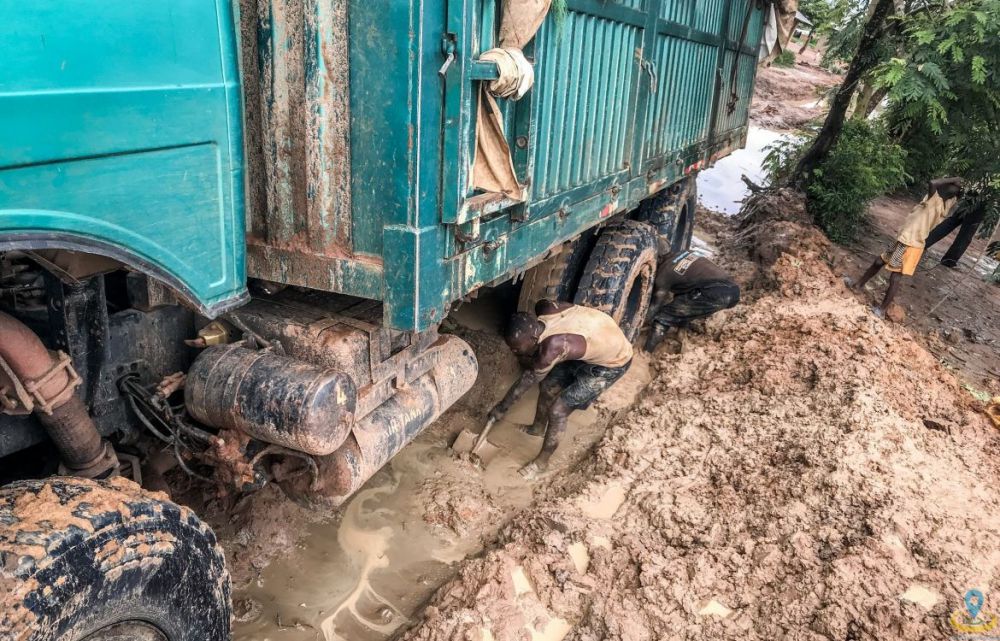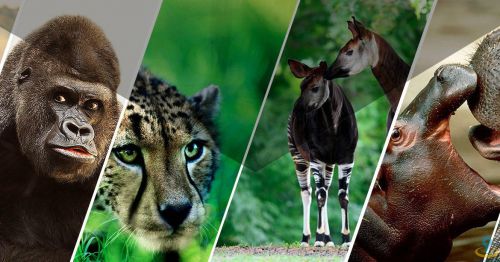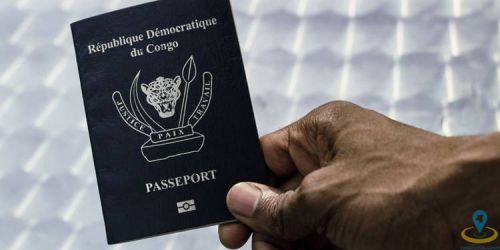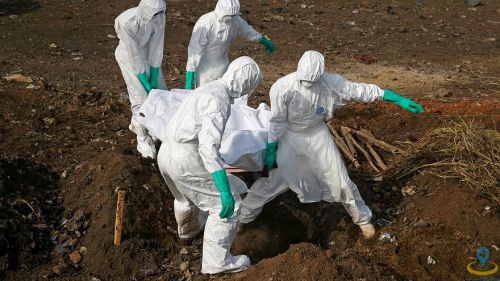8 Days Eastern Congo road trip: from Manono to Kindu
07 July 2021

Congo inland road trip : Manono-Kindu experience
This article is a second part of the thirty-day Congo road trip experience in Eastern part following the previous article about 7 Days Kasumbalesa-Lubumbashi-Likasi-Manono. It describes the road trip from Manono to Kindu; approximately 1,000 Km in only 8 days crossing two provinces: Tanganyika and Maniema. An experience that take us through extremely remote areas where roads have been abandoned and covered with grasses and shrubs; to only be recognized by the locals and Google GPS.
An impressive colonial architecture in Ankoro city
Early morning of the eighth day of this experience, we departed for Kongolo with two overnights; one in Ankoro and the other in Kabalo. Manno is a small beautiful city and for those passing by. It has good restaurants to enjoy local foods, mainly fresh fish. Navigating our way to Kongolo used one of the expensive transports throughput the trip. At least, we are lucky to have Congo Local Guides prominent moto riders for that distance. Though they decided to do their way back in Kabalo instead of Kongolo; of course tired and also; we had other contacts in the city to take us to Kongolo.
The first time crossing the Congo river was at Muyumba though we had several crossings of about fifteen minutes.. All crossings were breathtaking: Motorbikes and passengers loaded in small wooden pirogues; some even had holes and water was getting in before being put out. In Ankoro we had overnight at a very quiet guest house with electricity. But the issue was that, the more north we traveled, soft drinks, mineral water and beers become more and more expensive. But that didn’t stop us from enjoying the evening walking around, visiting old infrastructure of the port; the 1900s stunning architecture of the Sacred Heart Cathedral; local markets as well as many other local activities.
The next day, we left early morning for Kabalo and after less than 3Km we got stuck. Christian’s moto chain broke, while Andreas’ moto was moving forward. The driver tried to honk on them in vain before they stopped by themselves after realizing that no moto was following and returned after receiving a call. The driver’s tools were very old and could not fix the issue until they found a technician who assisted. If such issue happened in the middle of the jungle, it would have been very difficult to fix it.
We safely drove to kabalo despite a very thin path only passable by motorbike and very suitable to travelers seeking road adventure. In Kabalo after checking in at the hotel, we enjoyed our day visiting the Kabalo Train Station; the dock without any departing boat or train to Kongolo. Local people are friendly. We had fresh fish and Ugali for dinner before having an evening walk and a drink in nearby bar with Kabala, our new found friend.
The mysterious Gate of the Hell Falls in Kongolo
The tenth day, our new drivers came early morning for Kongolo. We took a shortcut, avoiding over 240 km of impassable road between Kabalo and Kongolo. We arrived at 12.00 pm after an impressive river crossing with strong wind and busy flow of water. The good thing is that we know how to deal with officials and locals for an easy integration wherever we stop. We first visited the Gate of the Hell Falls “Porte de l’enfer” located in a very remote area difficult to reach. This place only is reachable by moto, and requires travelers to hike about 3 to 4 Km to see the Gate of the Hell falls, apparently a stone in the middle of the river. We passed the Kongolo Train Bridge built in 1965, one of important train bridge in Congo, but, being used more by moto and people than trains, its dilapidation has accelerated.
We had a local Guide from the village who immersed us into the mystery history of the falls. Local people don’t recognize the falls as the Gate of the Hell or Muzimu (Demon) [what they consider to be an insult], but they call the place “Nkambo” what means “Grand Father”. For them, it offers specific virtues to those who request for virtues such as good luck, domination power, be granted with children, success at school, job promotion, and so far, mystic power. Our guide shared his own life experience. When his (real) Grandfather was still alive, he witnessed him talking to Nkambo in 1997, that requested him to go to a specific place where he would find a stone which would be used as a mean of communication whenever and wherever he [the real Grand Father] wanted to talk to him [Nkambo].
Chicken that people offers as sacrifice by those in need of help from Nkambo inhabit the verge of the river around the Gate of the Hell Falls. Those chicken has become wild animals and any other animal has the power to hunt them. Many of those who get recourse to Nkambo always get answers. According to the guide, one of evidence was that, those who don’t come out of their promises to Nkambo, see themselves in constraints calling them to obey their pledging. Some of them always lose what they got from Nkambo or even their relatives. The place by itself is full of mystery (but not sure it is true or a threat).
There are a lot to learn about. During our visit, the river was relatively calm but the movement of water was practically interesting, it was flowing making a circle looking like a whirlwind. The way the water is, if you fall in, there is no chance to survive and just for a reminder, Congo River is not navigable from Kongolo to Kindu because of numerous rapids and falls, the largest being “the Gate of the Hell”. This stone, in the middle of the river was a place for ancestors’ invocation to fight against issues facing the community, a habit that is still not frequent as the crossing is becoming more and more dangerous. We returned tired and had the evening watching football, DRC – Gambia on November 18, 2019.
The next day early morning, we started a city tour and visited the railway station, abandoned buildings and boats, together with the dock. We then arranged a transport to Kasongo. We had a nice and fast drive but took the whole day with no stop. This was around 221km, but our drivers took again shortcut in the jungle taking us seven hours. We reached Kasongo late in the evening and spend overnight at a local Guest House. We did a short walk around before returning for dinner. The place was quiet and clean.
The city with colonial stay still present, Kasongo
Our next stop was Kindu, but our departure mostly depended on transport availability. We preferred to take a vehicle, being a truck or a private car. The interesting site to visit is the center of slave, formerly a transit site for slave to and from East Africa. Though a strictly protected place, we successfully managed to convince the officials to grant us entrance.
The twelfth day, we enjoyed a short walk before some official visits. This gave us a test of Kasongo old, abandoned and colonial places and buildings. On our way back, we caught a small bus that was arriving from Bukavu and heading to Kindu. Though we impatiently waited for long, we boarded in, together with a young woman and her small child and an old woman with a couple of luggage. We departed at 1.30pm, however and amazingly, after less than 2km, the driver passed over stones along the road under maintenance breaking the fuel tank and thus we were all dropped off for the car to be fixed.
The only other option for us was to drive back to the guest house, getting only 80% of the cash reimbursed. Fortunately to be well prepared for our trip, we always bought enough water, snacks, and in Kasongo we added Kwanga (local food made from cassava flour) and sardine.
Then Came the next day. We caught a morning truck heading to Kindu. It was fully loaded of goods but we were full of hope to be in Kindu the same day for the 233km. interestingly, the first 10km from Kasongo are almost unbearable because of lack of road maintenance. The first time we stuck, the driver assistants managed to work and helped us out. The convoy had five trucks and all of them stuck into mud, making it hard for them to pull off each other so they decided to call assistance from the Congo Road Board for their bulldozer to pull at least the two first trucks and for them to pull the rest.
The bulldozer came and pull out all those that paid 50 USD plus fuel charge. Meanwhile on our side the driver and the truck manager were hesitating doing so, condemning us for ten hours stuck in a rainy place, worsening the intervention. The Bulldozer finally pulled us off at 5pm thanks to the delegation of the Deputy Governor that also stuck in mud few meters away. For the night, we drove only 45km and slept in a small village for an early morning departure to Kindu, which took us 7 hours.
One of the Congo most important cities but landlocked, Kindu
Finally, the fourteenth day, we made it to Kindu after Crossing at Kindu-Port-Empain. Our city tour included first the visit of the dock to check the next boat “la balenière” departure for Ubundu. There was a boat departure the next day “Wednesday” but since we wanted to departure on Thursday, they adjusted their departure to our plan and for that we had to pay “first class” booking, the room “terrible room” and crew members’ motivation.
We were lucky to get help from immigration on spot booking the boat and organize some official visit. Of course, they told us how risky it was to travel through Congo River using the wooden boat, and of course it was because many of the boat sink due to the kind of wooden embarkation, not resistant to waves, bad weather, and do not have navigation equipment. However, ours was safe and was not not carrying enough.
On Wednesday we continued with the rest of the city tour. The visit included, the Cathedral, the Kindu railway station; this being a visit one won’t get only because he/she request it, thanks to our close collaboration with local officials; we got it. This was an immersive visit into working mechanism of the Congo railway industry. Interestingly, the Kindu Railway Station has a set of machines that can produce any type of spare parts; for trains or ferries. The guide brought us to the shipyard, warehouse for goods arriving and in transit, hangar, carpentry, railroads tracks… We ended up enjoying fresh local food at a well-known restaurant. However, Kindu is one of landlocked cities in Congo due to the no navigable reach in downstream from Kongolo to Kindu. But also due to the impassable road in upstream from Ubundu to Kisangani, making hard to serve the city.
This is generally how we spent the second part of our travel experience into Eastern Congo. The next article, will share our travel from Kindu to Goma via Kisangani. Another long journey rich in experience and discovery.



